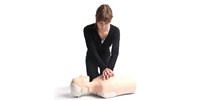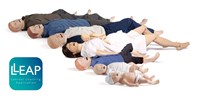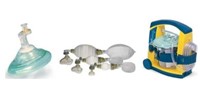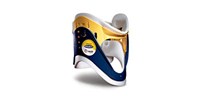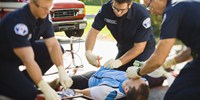SMART CPR, QuickShock and SMART Biphasic
Reduce the time from end of CPR to shock delivery
Quick Shock™ enables shock delivery after only 9 seconds
AEDs need time, without the disturbance from CPR, to make a Shock/No-Shock decision, and to prepare for shock delivery. This inactive time reduces the chance for a shock to be successful and should be as short as possible. (5,6) CPR prepares the heart for the shock but the effect however is short-lived and ideally a shock should be given within 10 seconds of stopping CPR (7). Quick Shock technology in all Heartstart AEDs now enables a shock to be delivered after just 9 seconds.
More CPR if the first shock is not successful
SMART Biphasic™ ensures high first shock efficacy
SMART Biphasic when launched in 1996 pioneered biphasic waveforms in defibrillators. Since then this waveform has demonstrated a near 100% success rate in converting ventricular fibrillation, the most common heart rhythm in SCA.(8) However, if the first shock is not successful giving another shock may not be optimal therapy.
The patient is likely to benefit more from a period of CPR to prepare the heart for a second shock.
New guidelines for resuscitation from American Heart Association and European Resuscitation Council November 2005 therefore promote CPR after each shock. Heartstart FR2 Biphasic AED’s can be configured accordingly.
SMART CPR, QuickShock and SMART Biphasic is a powerful combination for helping saving lives.
1. Cobb et.al. JAMA April 7,1999-Vol 281, No 13 “Influence of Cardiopulmonary Resuscitation Prior to Defibrillation in Patients with Out-of-Hospital Ventricular Fibrillation”2. Wik et.al. JAMA March 19, 2003-Vol 289, No 11 “ Delaying Defibrillation to give Basic Cardiopulmonary Resuscitation to Patients with Out-of-Hospital Ventricular Fibrillation – A Randomized Trial”
3. Weisfeldt et.al. JAMA 2002-Vol 288, No 23 ”Resuscitation after Cardiac Arrest A 3-phase Time Sensitive Model”
4. Valenzuela T. JAMA March 19, 2003-Vol 298, No 11
5. Eftestoel et al , Circulation 2002,Vol 105; 2270 -2272 “ Effects of Interrupting Precordial Compressions on the Calculated Probability of Defibrillation Success During Out-of-Hospital Cardiac Arrest”
6. Steen S et al. Resuscitation 2003 ;Vol 58 249-258 “ The critical Importance of Minimal Delay Between Chest Compressions and Subsequent Defibrillation: A Haemodynamic Explanation”
7. Edelson et al. Pabstratct prested at AHA Scientific Sessions, Dallas, November 2005
8. Schneider et.al. Circulation 2000;102(15):1780-1787 “Multicenter, Randomized, Controlled Trial of 150-J Biphasic Shocks compared with 200- to 360-J Monophasic Shocks in the Resuscitation of Out-of-Hospital Cardiac Arrest Victims

